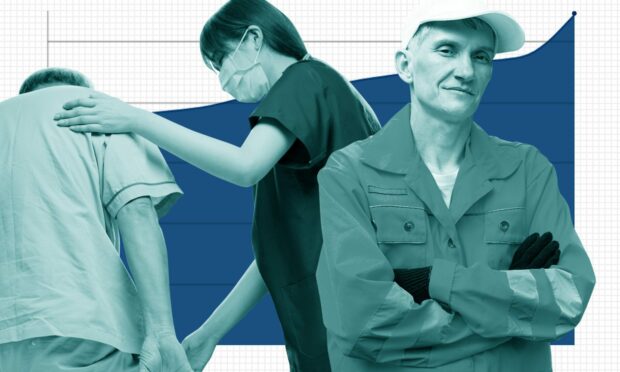Scotland has the lowest rate of jobs paid below the Living Wage in the UK, but how do those in the north and north-east fare?
As the cost of bills and mortgage rates continue to rise, being paid the real living wage has become more important than ever.
Prices are up 10.1% from this time a year ago, meaning inflation has far outstripped wage growth. We’ve looked at how well-prepared our region is based on how many are earning a living wage.
What is the real living wage?
The real living wage is an estimate of how much a person needs to earn in order to meet everyday needs, and is calculated by independent think tank The Resolution Foundation.
They consider a number of different costs facing households including heating, housing, childcare and transport costs.
The living wage is the same across the UK, at £10.90 per hour, with the exception of London where it is £11.95 per hour.
This is different from The National Minimum Wage, which is the lowest hourly rate that employers can legally pay.
Unlike the minimum wage, the real living wage applies to everyone aged 18 and over.
Businesses can sign up to be accredited Living Wage Employers and more than 11,000 employers have joined the scheme across the UK.
How much of a difference does the living wage make?
The current minimum wage for adults in Scotland aged 18-20 is £6.83 per hour, rising up to £9.50 per hour for those aged 23 and over.
Apprentices earn a lower hourly rate if they are either under 19 or in the first year of their apprenticeship.
As an example, a 23-year-old who works 35 hours a week should have an annual salary of at least £17,290.
Someone earning the real living wage working the same hours, by comparison, would have a salary of £19,838.
This is a difference of over £2,5oo per year before tax, the equivalent of the current energy price cap (the amount the average household will pay on energy bills in a year at the current unit cap).
How many people earn the real living wage in the north and north-east?
The latest Scottish Government statistics estimate that 99% of employees aged 16+ earned the National Minimum Wage in 2021.
However, a lower number of workers are earning the real living wage – around 85.6% in Scotland in 2021 overall.
This is better than in England and Wales, where an estimated 82.8% earned the living wage last year on average.
We’ve looked at figures for the north and north-east of Scotland to see how different areas compare. No data is provided for the islands due to small population sizes.
Aberdeen City performs best, with 13.4% workers (around 19,000 people) earning lower than the living wage in 2021. This is less than the 14.4% average for Scotland.
This means an extra 1 in every 100 workers earned a living wage last year compared to the rest of Scotland.
Workers in Aberdeenshire, on the other hand, fared worse than the rest of Scotland. A significantly higher proportion of people in Aberdeenshire, 23.3% (around 15,000 people), earned below the living wage. This means nearly 1 in 4 workers in Aberdeenshire did not earn enough to meet living costs in 2021.
Moray also performs worse than average, with 19.4% (7,000 people), earning less than the living wage in 2021.
Highland matched Scotland’s average last year, with 14.4% (14, 000 workers) earning less than the living wage.
How much has the real living wage increased this year?
In 2012, the Living Wage Foundation calculated that workers needed £7.20 per hour to live on. In the ten years since then, it has risen to £9.90 per hour.
When the cost of living increases, the real living wage increases. This reflects how much more a person would need to earn per hour to offset price inflation.
Inflation has been especially high this year, due to price hikes on fuel, food, and other essentials.
As a result, the real living wage increased by 10.1%, to £10.90 per hour, to meet growing costs. This is the biggest yearly increase ever.
Are you being paid the correct wage?
You can use the UK Government’s online calculator for workers to check if you are being paid the legal minimum wage for your age group.
Any employer who does not pay it is breaking the law.
There are other things to look out for to make sure you are being paid the correct amount.
Buying uniform or safety equipment, unpaid extra time, and your employer not keeping up with annual increases or a change in your age group could all push you below minimum wage.
You are not legally entitled to the real living wage, but if your employer has signed up as a Living Wage Foundation accredited employer, they should be paying at least £9.90 an hour currently, going up to £10.90 an hour by May 2023 at the latest.
If you think you are not being paid the correct amount, you can get help and advice from Acas, the independent employment advisors.


Conversation